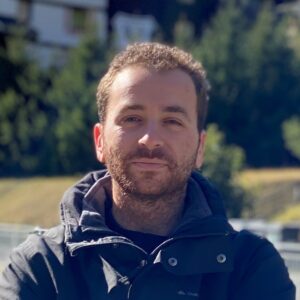 Furkan Gökçe
Furkan GökçeInterdisciplinary Research Engineer
Project:
Leukemia on Chip – Microphysiological Multi-Tissue System for Real-Time Monitoring of Patient-Derived Acute Lymphoblastic Leukemia. (Interdisciplinary Doctoral project, 2017)
Furkan: I am developing a physiologically relevant microfluidics-based drug screening platform for high-risk leukemia patients to personalize their treatments. Despite improvements in the survival rate of leukemia, different subtypes and relapses still lead to a high mortality rate. New and targeted therapies are limited due to the lack of robust models and by the low number of patients presenting high-risk subtypes. Hence, I culture patient-derived xenograft cells of leukemia patients with human bone marrow cells and human liver microtissues on a microfluidic platform. This makes it now possible to mimic liver-mediated drug metabolism and the flow conditions that leukemia cells usually experience in the body. The aim is to screen the responses of patients to the available anticancer drugs in a physiologically relevant environment before their chemotherapy treatment and to select the drugs accordingly by eliminating the lower efficacy drugs.
Furkan: I have my bachelor’s and master’s in electrical engineering and had no experience with biology before starting this project. The first challenge was to acquire all the skills required such as working in the wet lab and culturing cells and tissue models. Fortunately, I was able to do so in a very short time. The second and biggest challenge so far is working with patient-derived leukemia cells. Similar to two people having a lot of differences in their personalities, each experimental sample from the leukemia patients is different. I am, on the other hand, developing one common platform to screen for multiple patients. It means that I have to find the optimum cell culture conditions. In addition, as each of the samples comes from patients and xenografted animals, there is additional weight to treat them carefully. In the end, one of the aims of micro-physiological systems is to decrease animal experiments.
Furkan: I am an interdisciplinary research engineer. My motivation is to improve the lives of all in need. One of the reasons why I changed my research field to bioengineering was to learn the skill that I would need to conduct my future research and studies in the field of translational medicine. The fact that my Ph.D. project might already one day end up in the clinics, supporting the clinical oncologists treating leukemia patients gives me a lot of excitement. I am very proud to be a part of this project. I will do my best to end up with relevant results. Of course, not all projects end up with successful findings. I believe that, as soon as I report my findings openly and honestly, this will still be a great contribution to the literature, especially to micro-physiological systems and translational engineering in health and medicine.
Furkan: I like the collaborative and competitive environment of ETH. My project itself is a collaboration between ETH Zurich and Kinderspital Zurich. Our collaborators in Zurich are experts in pediatric oncology and oncological research. They are providing the patient-derived samples and supporting me a lot with my experiments and with evaluating my findings. In addition, our department D-BSSE is boosting collaborations. Whenever I had questions, I was able to find help from fellow Ph.D. students within the department, and even from the professors and senior scientists themselves. In addition, I am very happy with the scientific support from my supervisors. Finally, the technical and technological infrastructure is very good. We have access and budget to everything we need usually quite fast, such as the tools, in-house services, and third-party suppliers for assays or consumables. ETH also supports our training and personal development as Ph.D. students. I was able to join numerous conferences and seminars, training, and courses, not only research-related but also on my personal career goals.
Furkan: My dream is to see one of the tools that I developed in clinics actually helping the treatment of the patients or aiding the clinicians treating them. I hope that with this PHRT project, my Ph.D. studies will one day end up similarly in clinics personalizing the treatments of leukemia patients.